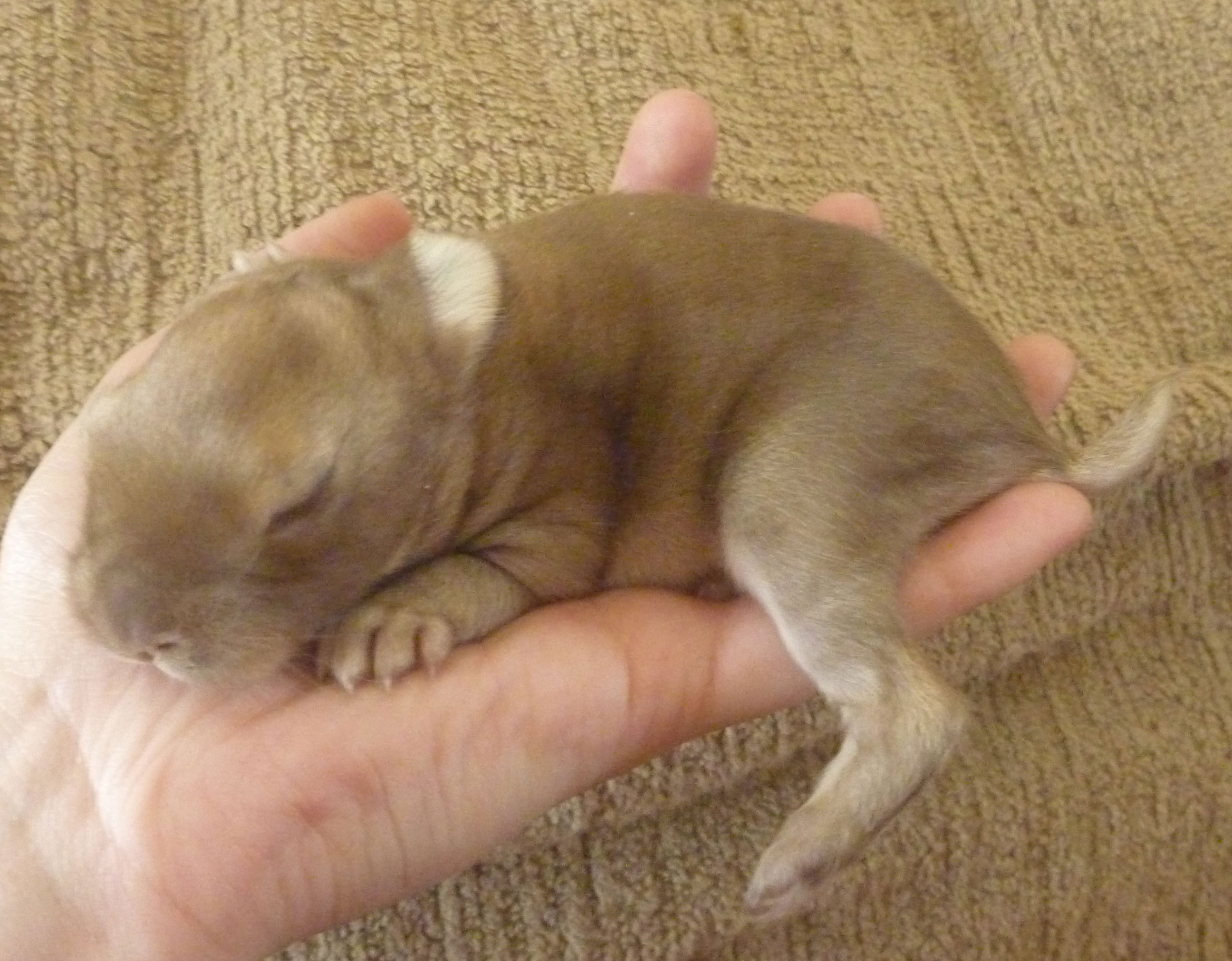bikegurl
Well-known member
Here they are! The lovely kits out of these parents...
[album]3316[/album]
[album]3306[/album]
[album]3312[/album]
[album]3311[/album]
[album]3310[/album]
[album]3309[/album]
[album]3308[/album]
[album]3315[/album]
[album]3314[/album]
[album]3307[/album]
[album]3313[/album]To help sort those colors, the parent's genotypes are..
Doe is either a blue self, or a masked gold tipped blue steel
__ Bb Cc dd EsE
Buck is magpie harlequin with a history of throwing chocolate magpies as well.
A_ Bb cchd_ D_ ej_
It's easy to ID chocolate and black based kits right now, but it will take a few days to sort chinchilla from agouti, and full extension from steel. Harli marks are possible on any of them, but not the whole harlequin patten. More like regular chestnut, chinchilla or steel colors with dark brindling mixed in with the regular pattern.
Hard to describe...anyone have a pic of a harlequinized something or other?
[album]3316[/album]
[album]3306[/album]
[album]3312[/album]
[album]3311[/album]
[album]3310[/album]
[album]3309[/album]
[album]3308[/album]
[album]3315[/album]
[album]3314[/album]
[album]3307[/album]























































